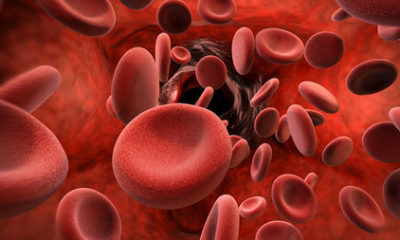Healthy Living
Cigarette Smoking: Risks factors, Addiction, Quitting & 7 ways to control Smoking

Table of Contents
According to the WHO, 6 million people die because of tobacco smoking and an estimated 600,000 individuals lose their lives due to second-hand smoke globally each year. A recent study found that smoking is related to about 20% of adult mortality around the world.
It is projected that smoking cigarettes will cause the death of 8 million people every year by 2030 and 80% of these deaths will occur in low and middle-income countries. Smoking is associated with an increased risk of cardiovascular and chronic respiratory diseases, stroke, and cancers of many organs of the body such as the mouth, larynx, lungs, kidneys, cervix, and pancreas.
Of the more than 6 million tobacco-related deaths every year across the world, one-sixth are accounted for by India alone. Experts see the total tobacco-related deaths rising to 8 million by 2030. In India alone, every third adult consumes some form of tobacco. Bidis are the most commonly consumed tobacco product and are primarily consumed by the poor.
Bidis alone contributed to 5.8 lakh deaths in the country in 2011. Tobacco causes 1 death every 6 seconds, yet India is the second leading consumer.
Tobacco doesn’t harm the individual alone, but also affects national economies through increased healthcare costs and decreased productivity. It worsens health inequalities and exacerbates poverty.
Some chemicals in a cigarette are:
- Ammonia – commonly used in toilet cleaners.
- Cyanide – used as rat poison.
- Formaldehyde – used in laboratories for the preservation of dead specimens.
- Nicotine – “the Hook”, habit-forming, addictive drug
Diseases caused due to smoking:
- Cancer: Lung cancer, cervical cancer, cancer of mouth and throat, bladder, pancreas, kidneys, and stomach. Cancer of the bone marrow helps cancer cells multiply in many other parts of the body.
- Coronary heart disease and stroke: Respiratory illnesses include chronic obstructive pulmonary disease, pneumonia, bronchitis, and emphysema.
- Infertility: This is caused by both men and women. In men, it damages blood vessels in the penis, which may make them impotent.
- Osteoporosis: Smoking places women at the risk of developing cancer of the uterus, vulva, and liver colon, to go with gastric ulcers and breast cancer. Smoking is a known risk factor for osteoporosis.
- Peripheral Vascular Disease (PVD) – Poor circulation leads to gangrene
Nicotine in cigarettes increases heart rate and blood pressure, Heart works much harder and needs more oxygen.
Passive Smoking
Smokers not only put themselves at risk of serious health problems. People around them are also exposed to the toxic chemicals in tobacco. There are 3 different types of tobacco smoke:
- Mainstream smoke – smoke directly inhaled by the smoker
- Exhaled mainstream smoke – smoke breathed out
- Sidestream smoke – smoke drifting from the burning end of the cigarette.
There is no safe level of exposure to tobacco smoke.
It is dangerous for a non-smoker to be exposed to tobacco smoke. Passive smoking is linked to lung cancer, breast cancer, nasal sinus cancer, heart diseases, stroke, lung diseases, and asthma.
Passive smoking during pregnancy increases the risk of SIDS (sudden infant death syndrome) and miscarriage and affects the baby’s birth weight and development of the infant’s lungs.
Babies and children exposed to smoke are at risk of childhood cancers, middle ear infections, decreased lung function, the onset of asthma, and bronchitis.
It is estimated that tobacco smoke causes 450,000 lower respiratory tract infections in infants & leads to the hospitalization of 25,000 young children. Children of parents who smoke are more likely to try cigarettes in their teenage years and become regular smokers. Parents are, after all, the role models for their children.
Third-Hand Smoke
It is not new that second-hand smoke is harmful to your children. It is recommended that you turn down the windows of your car. Research has highlighted the dangers for non-smokers exposed to smoke in cars. Contrary to common belief, opening the window does not eliminate the dangers of tobacco smoke.
Clothes and hair pick up the toxins too. In fact, besides the smoker and the passive smoker who is inhaling the smoke, there is a 3rd category called “3rd hand smoker “smokers leave traces of their smoke along with the harmful chemicals on curtains, clothes, bed sheets
, sofas which are harmful to the 3rd hand people who use the same room/bed. A small child crawling in the room picks up tobacco particles in this way. It may lead to cognitive deficits in children. There is no gradual process or “tomorrow”.
After 24 hrs of quitting smoking, the levels of CO in your blood drop dramatically. Within 5 days of quitting smoking, all nicotine products leave your body. The taste buds come alive again.
Your breath, hair, fingers, teeth, and clothes will be cleaner. After a week, the cilia of the lungs start cleaning mucus again. After 3 months, your lungs’ cleansing system begins to work normally.
Blood is less thick and sticky and blood flow improves. After 10-15 years, your risk of death from all causes, including lung cancer, will be close to that of someone who never smoked.
What can we do?
- Build a strong Public Opinion against Tobacco. Understanding and Awareness work better than a ban, though drastic action invites thoughtful discussion.
- Schools & Colleges are ideal settings for thoughtful awareness programs.
- Withdraw all privileges to tobacco companies; lifestyle products that strengthen the brand must be banned. It was a public outcry that removed the Tobacco sponsorship of Sports.
- Study the Tobacco Control Act and its provisions.
- Enforce existing legislation stringently.
- Demand utilization of Tobacco taxes to set up detox quit programs, and a coherent anti-Tobacco policy.
- Put anti-smoking products that help one to quit (Nicotine patches, Gum, etc) right beside Tobacco products in kiosks, and not just in chemist stores.
The COVID-19 pandemic has led to millions of tobacco users saying they want to quit. Commit to quit today and sign the pledge.
By Dr. Nitish Ranjan Acharya, Consultant Surgical Oncology, HCG Panda Cancer Centre









































